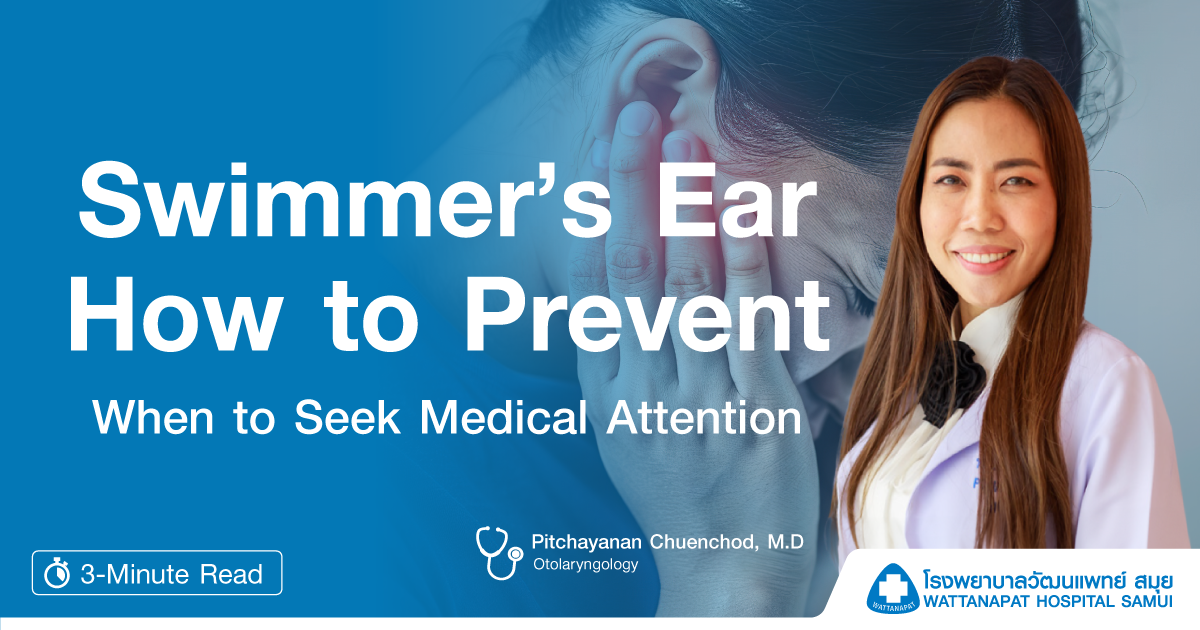Swimmer’s Ear and How to Prevent
Swimmer’s Ear and How to Prevent
How Much Water in the Ear is Too Much, and When Should You Seek Medical Attention?
In our daily routines, encountering water is an inevitable part of life through showers, swimming, or heavy rainfall. Sometimes, water unintentionally enters the ear. Although it might seem trivial, many patients visit doctors with complaints that begin with water trapped in their ears, eventually leading to infections or ear inflammation. Such conditions can cause discomfort and potentially affect long-term hearing.
Hidden Risks of Water Trapped in the Ear
When water becomes trapped inside the ear, it can serve as a breeding ground for bacteria and fungi. If the water doesn’t drain out properly, infections can follow, causing inflammation or severe ear pain.
Why Does Water in the Ear Become a Problem?
The skin of the outer ear is delicate and highly susceptible to irritation. Water containing chemicals or dirt can moisten the ear canal, creating an environment perfect for the growth of harmful microorganisms.
What is Ear Inflammation?
1. Defining Ear Inflammation
Ear inflammation is an infection that occurs within the ear, typically caused by bacteria or fungi. Depending on the severity of the infection, it can affect the outer, middle, or inner ear.
2. Types of Ear Inflammation
Ear inflammation has several forms, including outer ear infections (known as swimmer’s ear) and middle ear infections. Each type has distinct causes and treatment methods.
Signs and Symptoms of Ear Inflammation
1.Pain in the Ear
The initial symptom of ear inflammation often includes sharp pain or pressure within the ear canal. You may also feel a throbbing sensation that syncs with your heartbeat.
2. Tinnitus or Hearing Loss
When inflammation or trapped water persists, it may lead to temporary hearing loss or a blocked sensation, contributing to significant discomfort.
3. Discharge from the Ear
In more severe infections, yellowish fluid or pus may discharge from the ear, signaling a clear indication of infection.
How to Prevent Water from Entering Your Ears
1. Preventing Water Entry During Bathing
While bathing, avoid getting water directly into the ear. To minimize water exposure, use earplugs or a waterproof shower cap.
2. Preventing Water Entry While Swimming
Using specially designed water-resistant earplugs is a great option for those who love swimming. These can help protect your ears from exposure to dirty water in pools or oceans, reducing the risk of infection.
What to Do When Water Enters the Ear
1. Simple Ways to Remove Water from the Ear
If you feel water trapped in your ear, try tilting your head and gently tapping the affected ear to help it drain. Alternatively, tilt your head and jump lightly until the water flows out.
2. Avoid Ear Probing
Never insert cotton swabs or sharp objects into your ear, as this can cause irritation or injury to the delicate structures inside.
When to Seek Medical Attention
If you experience persistent ear pain, discharge, or hearing loss, it’s crucial to consult a doctor immediately. These could be signs of a more serious infection that requires prompt medical intervention.
 |



